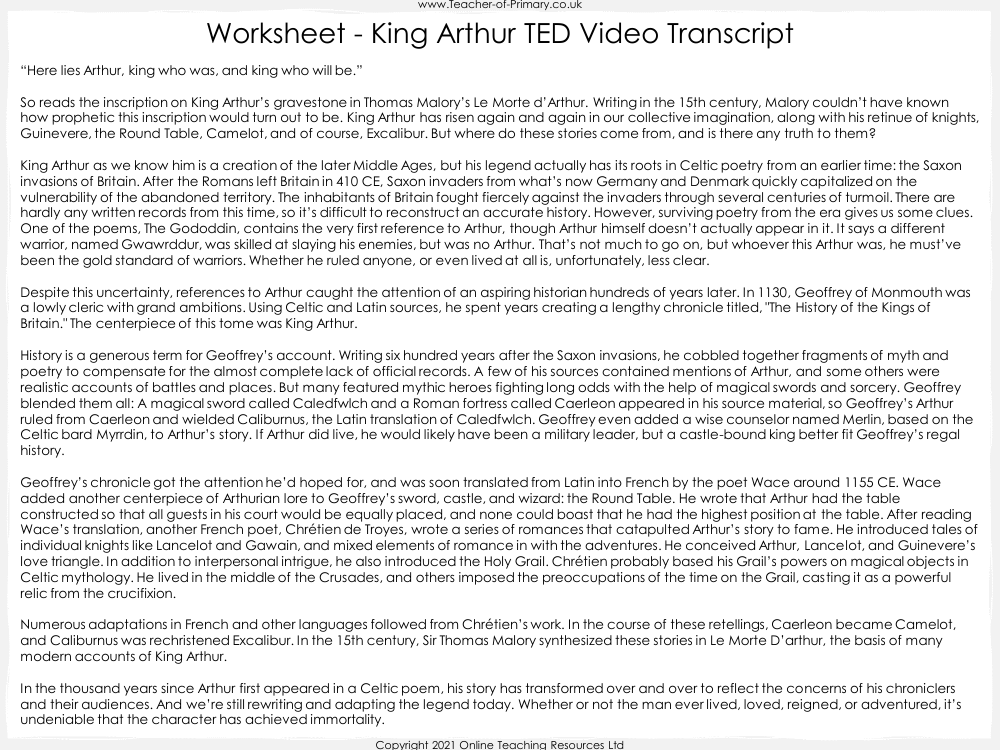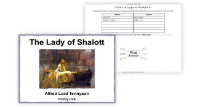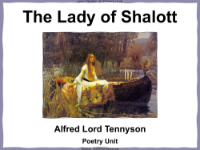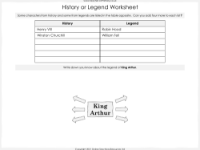The Lady of Shalott - Lesson 1 - King Arthur TED Transcript Worksheet

English Resource Description
The enduring legend of King Arthur, a figure who has captivated the imagination for centuries, is explored in a thought-provoking lesson that delves into the origins and evolution of his story. The inscription on King Arthur's gravestone in Thomas Malory's "Le Morte d'Arthur" reads, "Here lies Arthur, king who was, and king who will be," reflecting the timeless nature of his tale. While the character of King Arthur as known today was shaped during the later Middle Ages, his roots trace back to Celtic poetry written during the Saxon invasions of Britain. With scant historical records from that era, it is the poetic references that provide glimpses into the past, suggesting Arthur was held as a paragon of warriors, though his actual existence remains shrouded in mystery.
Geoffrey of Monmouth, an ambitious cleric from the 12th century, played a pivotal role in chronicling Arthur's legend in his work "The History of the Kings of Britain," despite the scarcity of official records. He creatively fused fragments of myth, poetry, and realistic accounts, incorporating elements like a magical sword and the fortress of Caerleon, and introduced the wise counselor Merlin. This narrative was later embellished by the poet Wace, who added the iconic Round Table to symbolize equality among Arthur's court. French poet Chrétien de Troyes further popularized Arthur's story, incorporating romantic elements and the quest for the Holy Grail. Over time, retellings transformed Caerleon to Camelot and the sword Caliburnus to Excalibur, with Sir Thomas Malory's "Le Morte D'Arthur" in the 15th century serving as the foundation for many modern interpretations. The lesson underscores how King Arthur's legend has been continually reimagined to reflect the values and preoccupations of each era, cementing his place as an immortal character in literature and culture.




